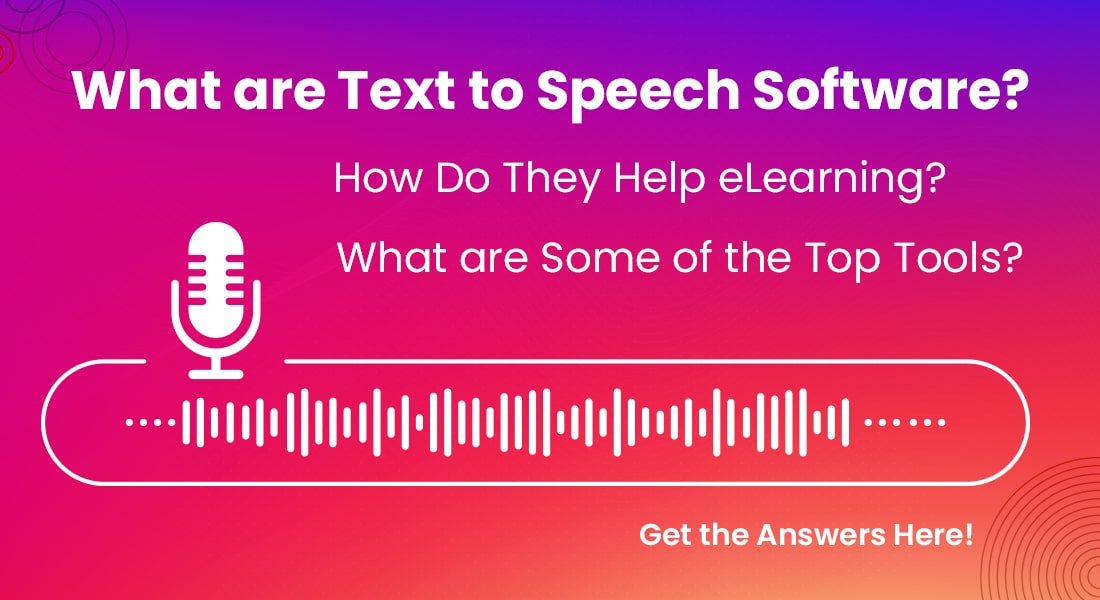How Audio Narration Should be Used for Enhancing Learning in Online Courses?

According to one of the ASTD blog, titled, “Stop Wasting Resources on Learning Styles“, audio can make learners concentrate on any graphical presentation or visual information better than they can do with text. In this way, we can clearly say, no doubt audio can be very helpful for improving the learning; but will that be enough? I think not.
→ Download eBook: Classroom to eLearning Conversion - Everything You Always Wanted to Know
There is one more element to this use of audio in eLearning that certainly cannot be ignored and that is – better audio narration. As in eLearning courses, audio narration can be used basically for four different purposes such as: narrating everything given on screen, summarizing the on-screen text, providing additional information about the text on-screen, and describing an image (as per the requirement of course). Audio narration needs to be effective enough to make learners understand the subject matter better. On the contrary, poor audio narration can disengage the learners and mar the course. Let us see a few ways how audio narration can be made better in eLearning courses.
It should be used to complement and support the content:
As the learning is supposed to happen online, the audio narration should be focused on the content on the screen (visual or text). For example, while explaining about an image or graphical presentation, the audio should be related to that particular image or presentation at that time, rather than any other information. This is so because unlike a classroom situation where an instructor can instantly bring the attention to the content on the board by pointing his/her hand while discussing other topics, learners have focus on the onscreen content themselves. Hence, it is important that the audio should speak about the exact contact that appears on the screen.
It should sound conversational
To ensure that the online learning experience is not too mechanical for learners, it is very important that the audio should sound conversational. For this, narrators can be asked to maintain a conversational tone throughout the narration of audio script rather than just describing the onscreen content in a very professional manner. This instructional design strategy can personalize the whole learning process and make learners to identify themselves with the online course, thereby increasing the understanding of learners. According to a study, mentioned in “eLearning and the Science of Instruction” by Ruth Colvin Clark and Richard E. Mayer“, compared to formal narration, conversational narration has produced 20 percent to 46 percent more correct answers. (Source: ASTD blog: “Boring to Brilliant: 5 Tips to Convert Your E-Learning to a Story-based Approach”)

Classroom to eLearning Conversion
Everything You Always Wanted to Know
- Converting classroom material to eLearning
- Leveraging authoring tools for conversion
- Understanding different avatars of eLearning
- And More!
It should be used appropriately, and only when needed
It is suggested that narrating each and every word in the same order on the screen can make the learning very ordinary and boring for learners. Instead, use audio narration when it is needed and the way that it adds value to the content. For example, a process, a simulation or a complex diagram that learners need to focus more, can be better explained by the audio narration. This can not only reduce the stress level of learners in the learning process, but prevent missing of useful information in reducing the stress caused by the learning process as the trainee needs to grapple with complex learning content.
It should allow learners to exercise control over the course
The audio feature in eLearning should be set up so learners can skip the narration whenever they choose. This is essential because some learners (especially visual learners) may prefer to focus solely on the screen content without listening to narration. This flexibility ensures the course meets the needs of both visual and auditory learners, adhering to instructional design principles that emphasize learner autonomy and adaptability.
It should meet the recording quality standards
As the audio recording process is technical, it is better to check common technical issues such as too much loading time for audio files (large audio files), audio file not saved in the proper quality format, disconnection of audio narration with respective onscreen content, and presence of unwanted noise in audio. To avoid this, it is always recommended to record audio in a high quality, sound-proof recording studio, where expert sound recording engineers can sort out technical issues, if any, and ensure that narration is done as per quality standards with proper compression rates. Apart from this, it is always better to test the quality and compression rates for a few initial audio files rather than check the whole recorded audio script.
It should be done by professional narrators
It is always better to hire professional narrators for narrating the audio script of the course. This is important because narration is like an art. A professional who is having vast experience and expertise in handling narration, can be already expected to know better about language and accent than someone who is not a professional narrator. This factor becomes even more crucial if the course is translated into more than one language. Here, a professional narrator who is proficient in language and who understands the sophistication of a specific culture can sound more convincing than a non-professional person.
We have now learnt a few points that can make audio narration in eLearning and other instructional design modules more effective. Would you like to suggest something more on the effective use of audio narration in courses? Please do share your views. We would really appreciate your response.





